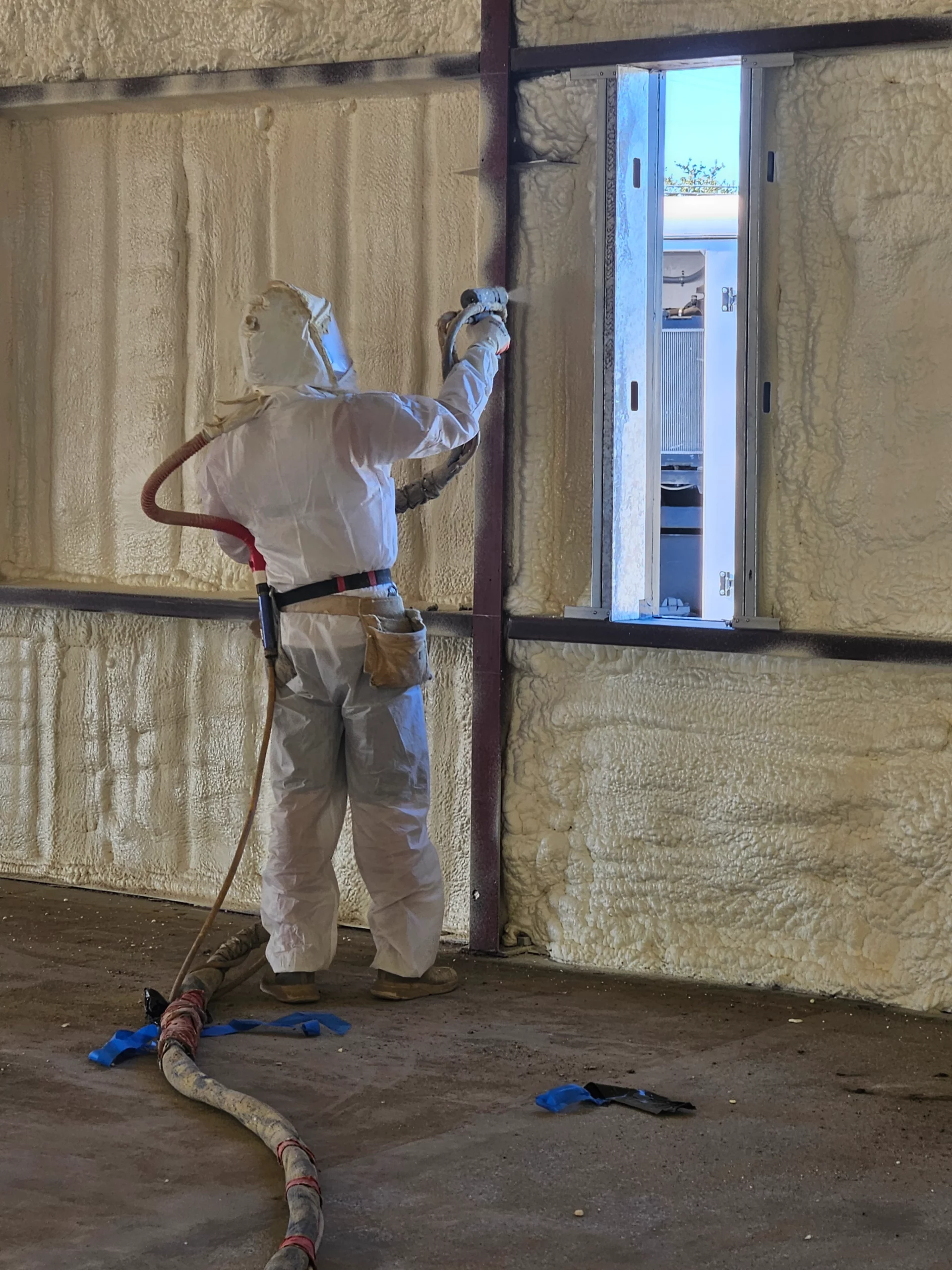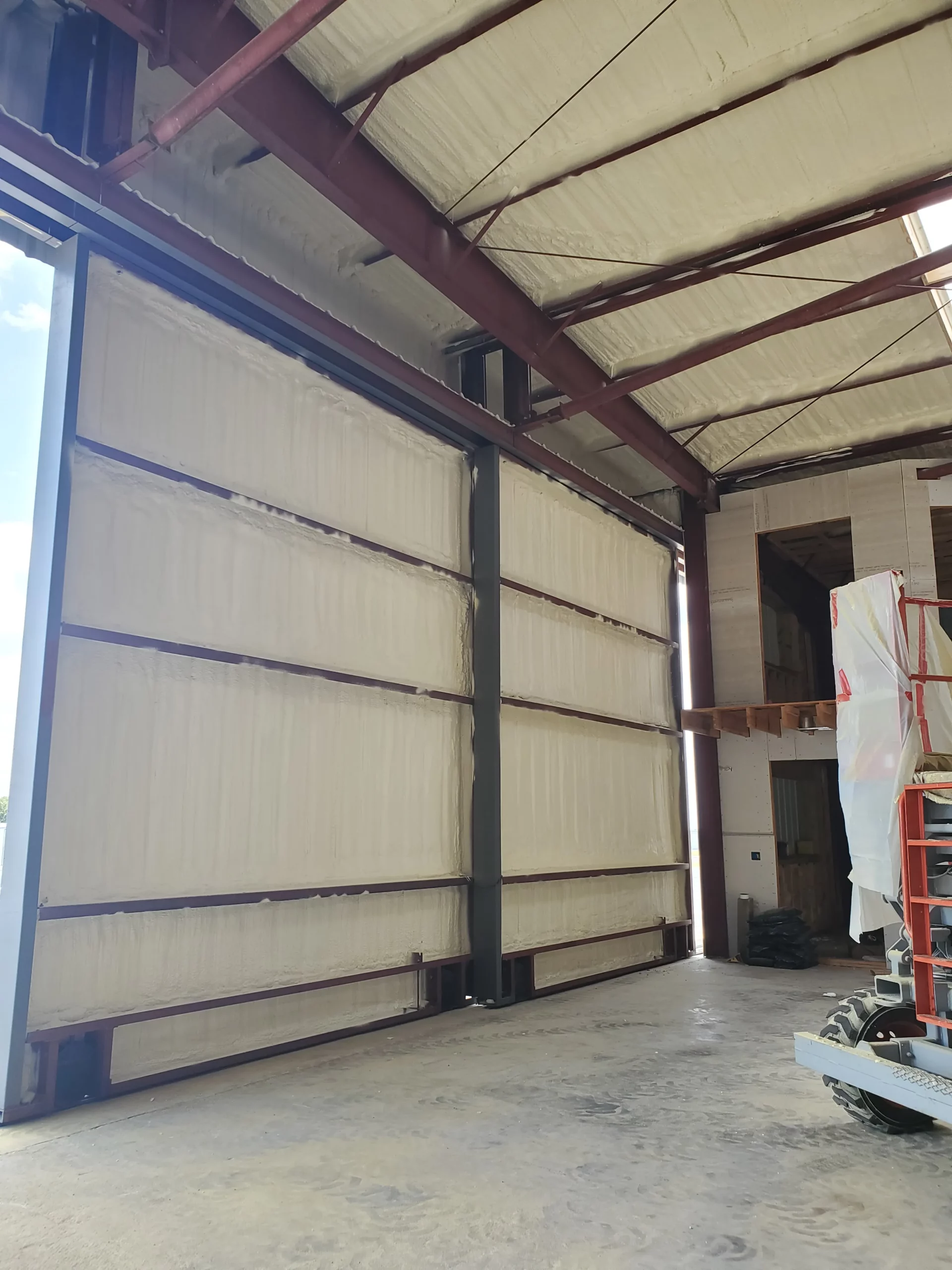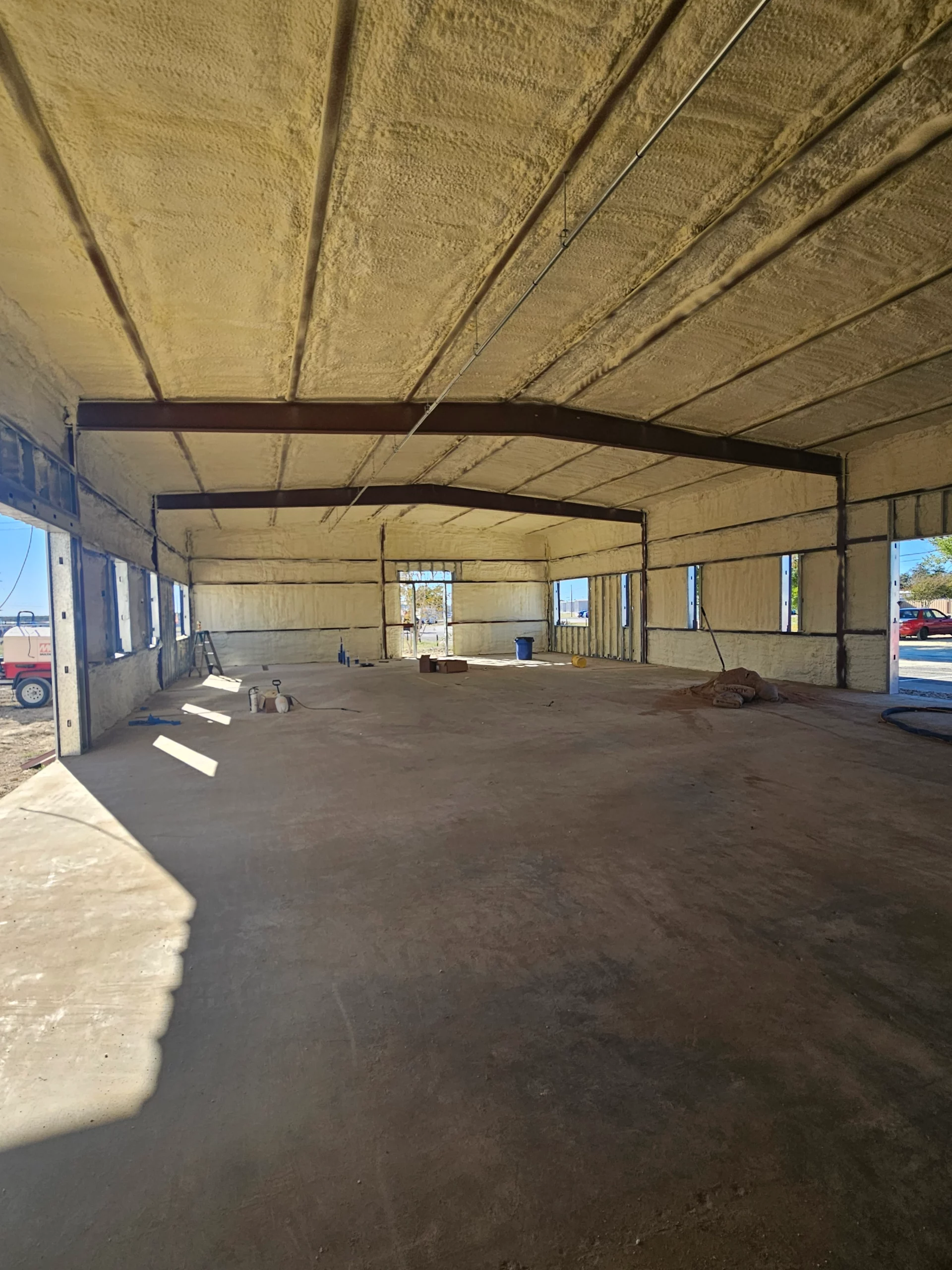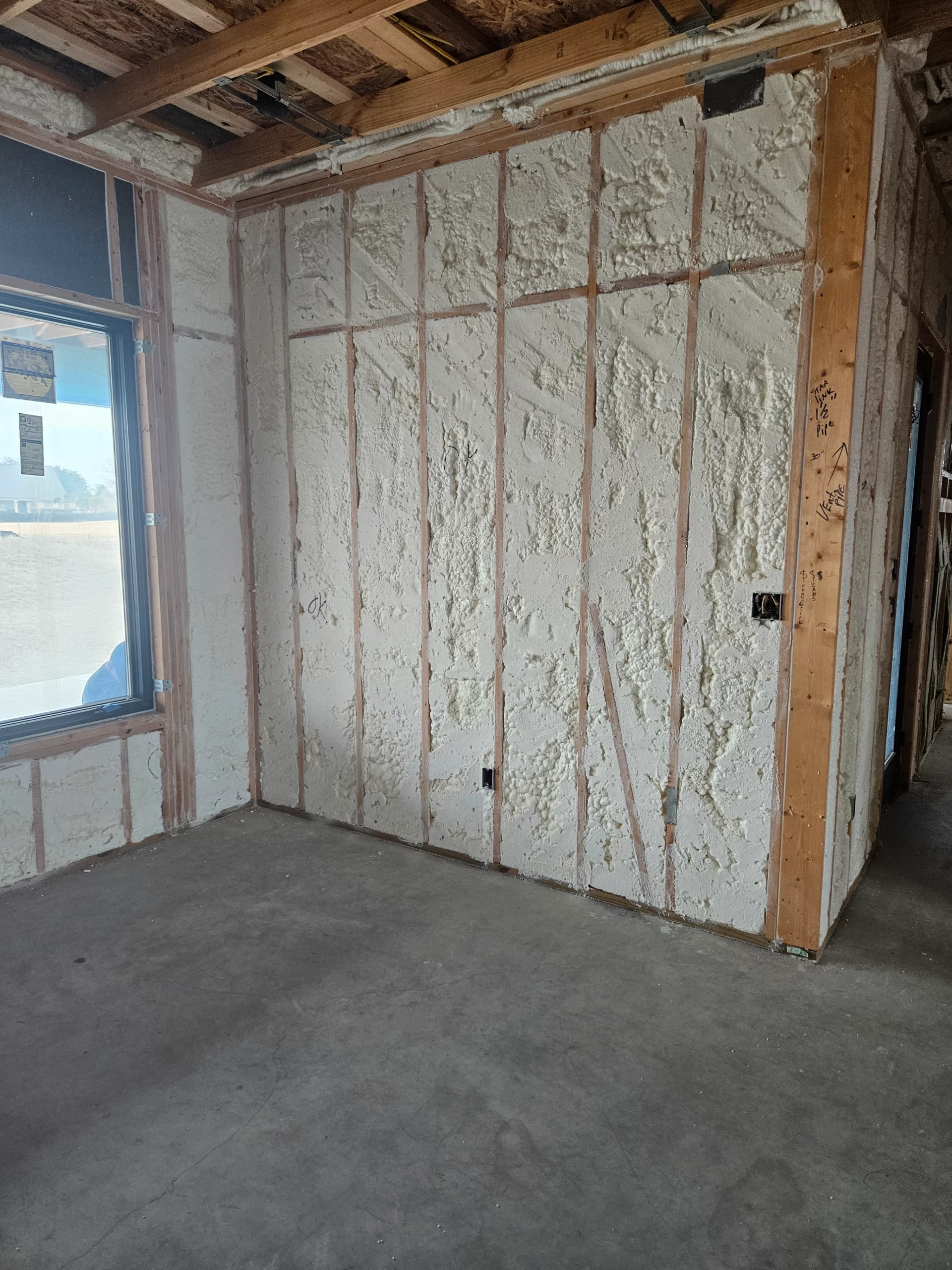

Spray foam insulation significantly lowers utility expenses in commercial buildings by sealing air leaks more effectively than traditional insulation. It forms a continuous air barrier that limits heat transfer, reducing the load on HVAC systems. Commercial properties using spray foam insulation can see a reduction in heating and cooling costs by up to 40%, based on building type and climate conditions.
Most air leakage occurs through walls, ceilings, and roofs. Open-cell and closed-cell spray foam provide high levels of thermal resistance (R-value), filling cavities, cracks, and seams that batt or loose-fill insulation can’t reach. This prevents conditioned air from escaping and unconditioned air from entering, leading to more consistent indoor temperatures and lower operational costs.
Spray Foam Tech relies on in-field experience with various insulation types across multiple building structures to explain how spray foam delivers measurable energy savings. Data is supported by studies from the U.S. Department of Energy and Building Science Corporation.
Air leakage accounts for 25-40% of total energy loss in poorly insulated buildings (Source: DOE, 2023). Unlike materials that shift, settle, or degrade over time, spray foam adheres to surfaces and retains its structure, helping commercial properties maintain their energy envelope over decades.
| Location | Risk of Leakage | Standard Insulation Limitation | Spray Foam Benefit |
|---|---|---|---|
| Wall Cavities | High | Gaps around wiring/pipes | Expands to fill every void |
| Roof-Wall Junction | Very High | Difficult to seal manually | Fully seals junctions and eaves |
| Mechanical Penetrations | Medium | Settling leaves gaps | Adheres tightly around penetrations |
| Windows/Frames | Medium | Tape-based air barriers fail | Integrates with window edges |
| Type | R-Value (per inch) | Air Sealing Quality | Moisture Resistance |
|---|---|---|---|
| Open-Cell Spray Foam | 3.6 – 4.0 | High | Low to Moderate |
| Closed-Cell Spray Foam | 6.0 – 7.0 | Very High | High |
| Fiberglass Batt | 2.9 – 3.8 | Low | Low |
| Mineral Wool | 3.7 – 4.3 | Moderate | Moderate to High |
| Cellulose (blown-in) | 3.2 – 3.8 | Low | Low to Moderate |
| Specification | Open-Cell Foam | Closed-Cell Foam |
|---|---|---|
| R-Value (per inch) | 3.6 – 4.0 | 6.0 – 7.0 |
| Air Impermeability | Yes | Yes |
| Water Vapor Permeance | 10+ perms | <1 perm |
| Structural Rigidity | Low | High |
| Application Thickness | 3″ – 5″ typical | 2″ – 3″ typical |
| Fire Resistance Rating | Meets Class 1 ASTM E84 | Meets Class 1 ASTM E84 |
In Texas and the Southwest, solar load and humidity are major factors. Closed-cell spray foam performs better in areas with high humidity or frequent temperature swings because it blocks moisture intrusion while insulating. Open-cell is effective in interior cavities and ceiling decks where breathability and sound absorption are needed.
Bonus Tip: For metal buildings and pole barns, closed-cell foam prevents condensation and adds structural strength to thin wall systems.
Bonus Tip: In mixed-use structures, combining open-cell on interiors with closed-cell on roofs and exteriors offers balanced performance and cost.

For commercial insulation projects, choosing the right spray foam solution can significantly improve energy efficiency and indoor comfort. Contact Spray Foam Tech to speak with a professional who understands building science and local performance factors.
Spray Foam Tech
Phone: (737) 777-9590
Email: oldworldtx@hotmail.com
Yes. The energy savings often recover installation costs in under five years.
Not recommended. Removal ensures better adhesion and performance.
Closed-cell foam adds rigidity. Open-cell does not but improves sound absorption.
Spray foam typically performs for 20-30 years without degradation.
Both foam types meet Class 1 fire ratings when properly installed.
Very little. Periodic checks for physical damage or water intrusion are sufficient.
Yes. Damaged areas can be trimmed and re-foamed without removing the entire section.
Closed-cell spray foam withstands high temperatures and helps reduce thermal bridging.
Modern spray foams use low-GWP blowing agents and comply with EPA guidelines.
Proper application with ventilation planning avoids moisture buildup. Closed-cell blocks vapor; open-cell allows it to pass.


